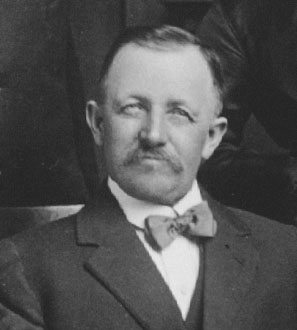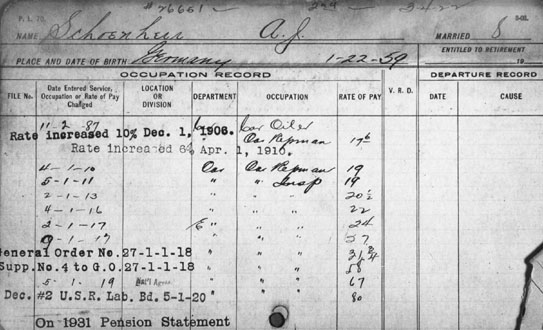 |
 |
 |
 |
This text is quoted from "Here's Fort Wayne Past & Present" Bicentennial booklet of 1993:
"The great expanse of the main post office complex between Clinton and Lafayette streets is an impressive facility. Yet not very long ago this area formed the central part of a much larger railroad operation called the Pennsy Shops. These locomotive and railroad car shops extended east nearly three miles along the present-day Conrail tracks on the south side of the city. For nearly half a century, from the Civil War until just past the turn of the century, Fort Wayne was one of the most important railroad centers in the nation. At one time, along the Pennsylvania line alone, 50 trains a day stopped in Fort Wayne. This is one every half hour, and on just one of the seven railways in town (by 1900 more than 200 trains a day came and went in Fort Wayne). What made Fort Wayne a railroad center was the complex of shops where locomotives and cars were designed, built, tested and repaired or overhauled. Hundreds of locomotives and thousands of railroad cars were built here, Here, too, the "West Enders" worked. These were the railroaders who, with the brim of their striped caps characteristically turned up, took immense pride in pushing the great steam engines (and themselves) to maximum performance. And here labored hundreds of craftsmen, who built some of the most luxurious passenger cars in the nation. The shops themselves were the central feature of all this activity, and they were a part of the very beginnings of railroading in Fort Wayne.
Even before a train had ever been seen in Fort Wayne, Samuel Hanna in 1852 donated a parcel of land east of Clinton for the anticipated railroad shops. In 1853 John and Charles Cooper set up a blacksmithy nearby, and in the next year Kentuckian Sion Bass bought the operation, only to sell it in 1857 to the newly formed Pittsburgh, Fort Wayne and Chicago Railroad (later the Pennsylvania Railroad). This was the beginning of the Pennsy Shops. The Shops grew rapidly, especially with the demands of the Civil War; in concert with the Bass Foundry located across the street the railroad shops provided critical material help to the Union war effort.
After the Civil War, railways across the nation expanded greatly, and the demand for better engines and cars redoubled. In Fort Wayne the basic design of the Pullman Car was refined to produce the "Fort Wayne Silver Palace Car. " This elegant sleeping car, resting on the best springs available, was lush, with a rich, brilliantly colored moquette carpeting to match the velvet upholstery of the silverarmed seats. Silver omamentation highlighted the painted ceiling, and black walnut woodwork boasted gold trimmings. The lamps cradled fine cut-glass globes. An adjustable table could be set up between the seats. Under the direction of Fort Wayne-based master mechanic James Boone, the locomotive assumed a leading position in the railroading world of the 1870s. "Boone-built"locomotives, designed and built in Fort Wayne, broke many performance records, especially those for speed on the long straight lines west from Fort Wayne to Chicago. Also designed in Fort Wayne was the Pennsylvania system's superb Class X locomotive, called the Steffin Engine (after its designer). Built in the Pennsy Shops between 1892 and 1897 these were high-performance engines. One locomotive stunned railroaders when it left Foil Wayne an hour and a half late but arrived in Chicago only 14 minutes behind schedule.
Fort Wayne no longer made locomotives after World War I, and much of the work at the Pennsy Shops was given to repair and overhaul. Even after locomotive rebuilding in Fort Wayne ended in 1933, the Shops continued to build passenger cars. Still, production in the Shops declined sharply after World War IL Finally, in 1953 the last of the railroad operations closed, and by 1966 all the property had been abandoned. The roundhouse, the most distinctive feature of the Shops, was tom down in 1984, the last vestige of the once mighty Pennsy Shops."